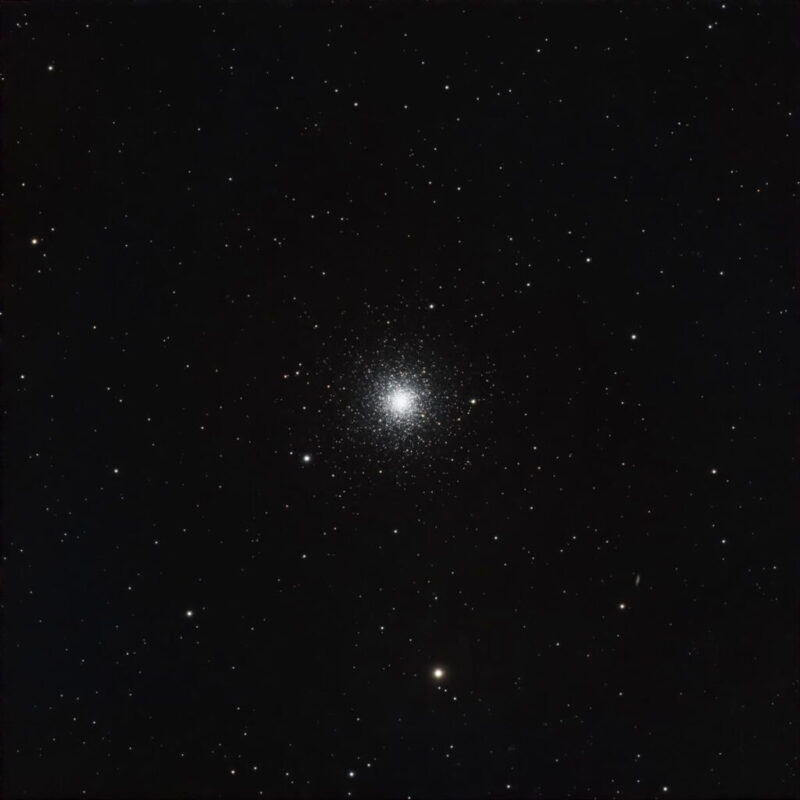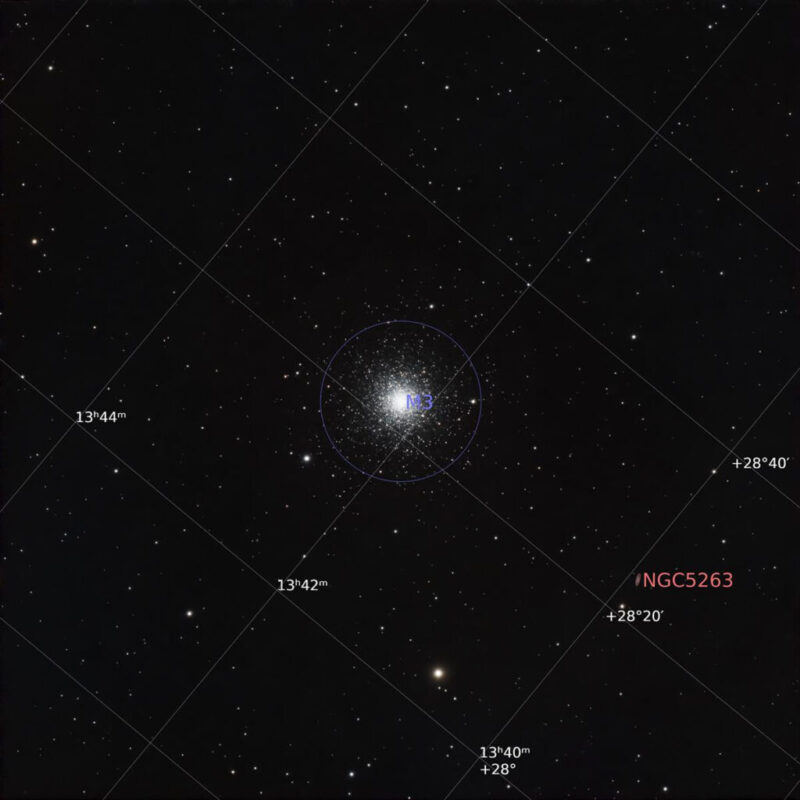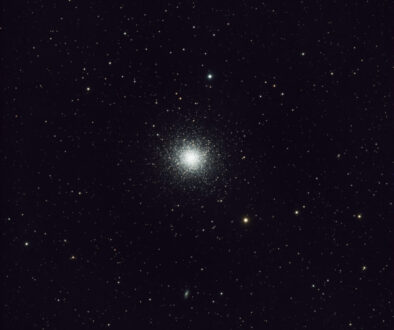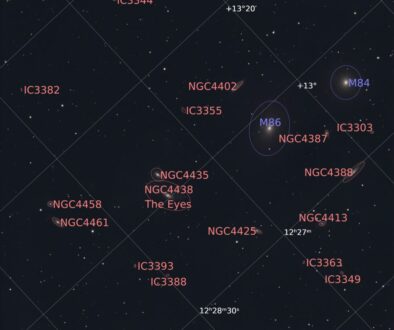From my backyard to Light-Years: Imaging the M3 Globular Cluster
On May 19, 2025 the sky was clear with cool temperature – perfect conditions for astrophotography without any interference from mosquitoes. I turned my telescope toward some of the season’s rising globular clusters. My first target for the night was Messier 3, a spectacular globular cluster in the constellation Canes Venatici (the Hunting Dogs).
The image below is the result of a one-hour integration, captured using an ES ED80APO CF refractor paired with a ZWO ASI533MC Pro (my one-shot color camera). To reduce light pollution, I used an Optolong L-Pro filter, with guiding provided by an Orion Mini 50mm scope and a ZWO ASI224MC camera. I used the Juwei 17 harmonic drive mount, controlled by a Mele Quieter 4C mini PC running NINA. Image processing was done in PixInsight, with finishing touches in GIMP.
M3 is one of the brightest and largest globular clusters in the northern sky: it contains an estimated half a million stars! Located about 34,000 light-years away from Earth, M3 measures about 180 light-years across.
M3 is also scientifically significant, as it contains at least 274 variable stars (the highest number found in any globular cluster). Its estimated age is between 8 and 11.4 billion years, making it a true ancient relic of our galaxy.


In the annotated version of the image you’ll also notice the faint galaxy NGC 5263, sitting approximately 240 million light-years away.
Thank you for reading this post and clear skies!


